Kareena Gianani rides the dunes of Jaisalmer, prowls across its haunted villages at night and enters curious alleys in Jodhpur to find places lost and found, in space and time
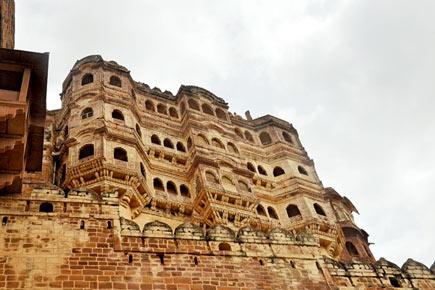
Jaisalmer, Jodhpur
ADVERTISEMENT
You need: A week
Best time to visit: July-January
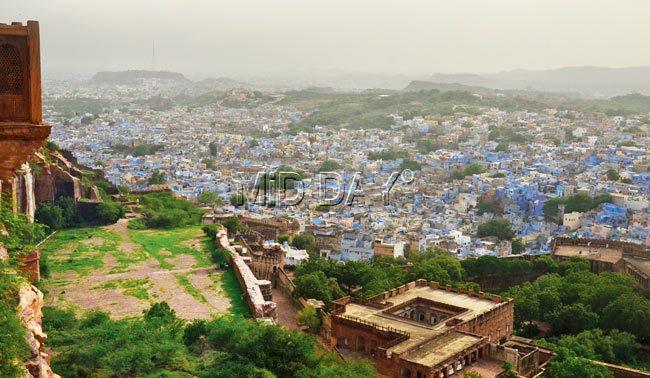 The blue city’s views from atop the Mehrangarh fort are breathtaking. Pics/Kareena Gianani
The blue city’s views from atop the Mehrangarh fort are breathtaking. Pics/Kareena Gianani
In the deserts of Jaisalmer, journeys through sand and time can sometimes take moments. And, for company, if you have a storyteller who specialises in myth and folklore and a travel enthusiast who reunites with virtual friends in strange hamlets, journeys transcend time itself. At least in Jaisalmer they do.
We, six strangers, are on our way from Jodhpur airport to Jaisalmer, unaware, yet, of what the rains make of the latter city. On the way, we pass by men with perfectly coiffed moustaches and distant, swirling sandstorms. Flag-bearing devouts of Baba Ramdev trudge on for miles for a festival.
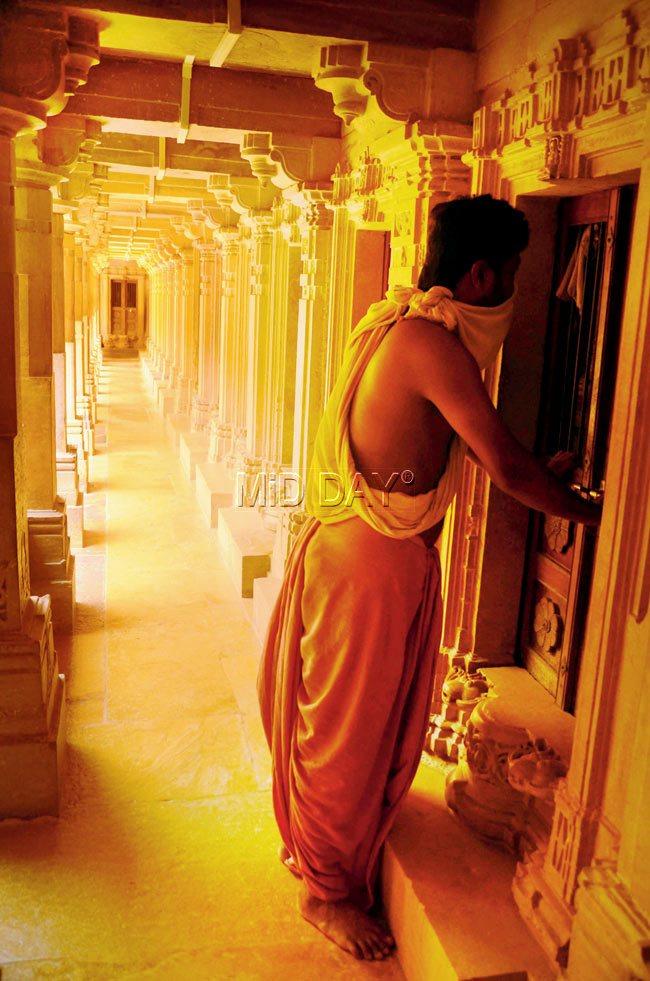
A priest at a beautiful Jain temple inside Mehrangarh fort
In August, when the monsoon tiptoes toward Jaisalmer, it transforms its lands. Spurts of green shrubs and trees dot the undulating sand plains. Short, sporadic showers waterlog its streets, enough to form pools for children to wade in, shrieking in relief and pleasure. By the time we reach our hotel, it pours with a vengeance. We have brought the monsoon to Jaisalmer, they tell us.
Rites of passage
The city of Jaisalmer, charming as it is, can wait. I am here to walk the Silk Route, which passed through Jaisalmer between the 16th-18th century, and see whether the caravans of tradesmen from Kabul and Arabia can truly be traced. Remnants of the life and history of the Paliwal community, who lived here in the 12th century, can still be found in abandoned, ingenious irrigation systems. Cenotaphs of Arab, Oriental and European traders stand crooked in the sand, sometimes vandalised, but stoic. Temples, spartan and intricate, dot the desert city’s landscape. This is the Jaisalmer few know of, and even fewer seek.
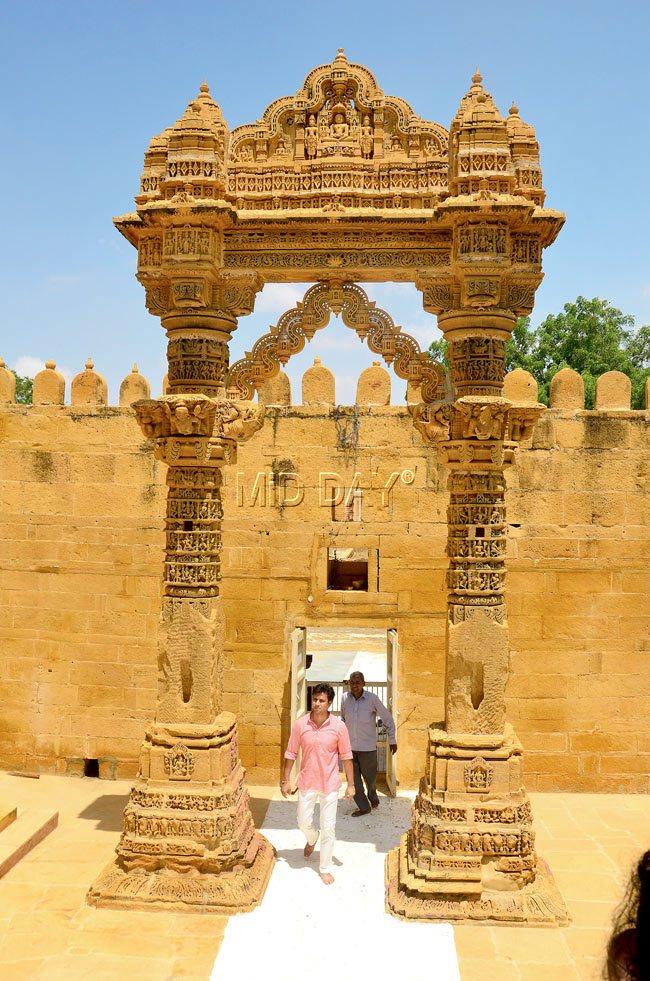
The intricately-carved Lodurva Temple in Jaisalmer
The Paliwals moved to Jaisalmer from Pali, and lived true to the philosophy of being at one with their land. Predominantly agriculturists and pastoralists, they thrived in spite of Jaisalmer’s punishing dry spells through masterful innovations in irrigation systems.
What is most interesting, however, is to stand atop a fort overlooking the haunted Kuldhara village where the Paliwals once lived. Legend goes that a debauched local ruler announced that he wanted to marry the chief’s daughter and threatened to wipe the community out unless he got his way the very next day. Eighty-two Paliwal villages vanished overnight — no one knows whether they were killed or they escaped through the very famed underground irrigation systems only they knew best. Whatever the fate of the Paliwals may have met, seeing a largely intact, haunted village is not a sight I am truly prepared for. It could be the collective imagination of a highly excitable group, but we all fall silent, expecting apparitions to be around the corner.
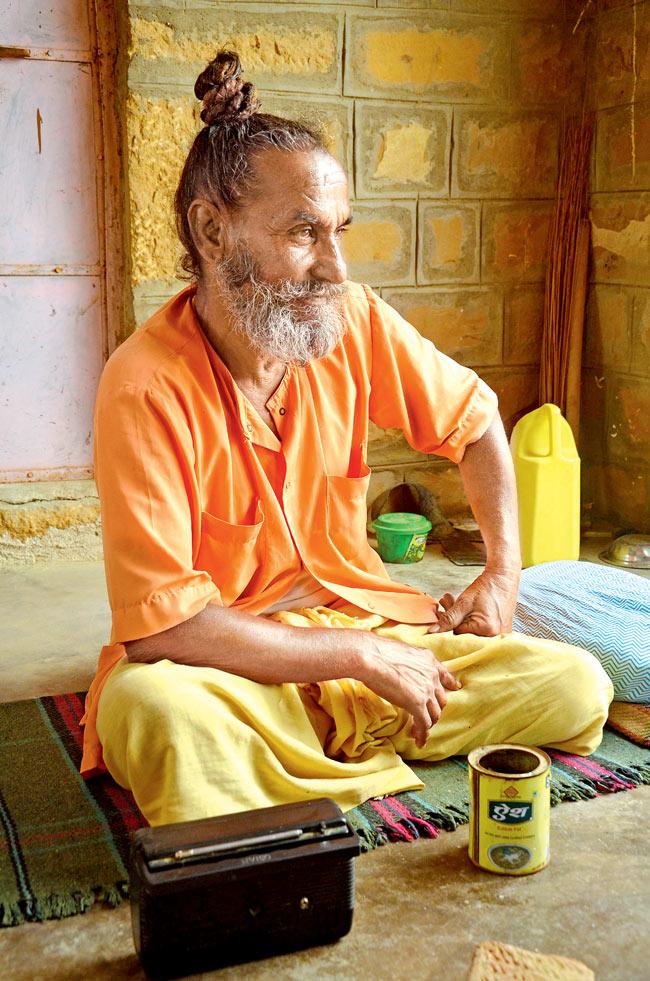
The Shiva Temple’s priest
A fan in Jaisalmer
Kuldhara is not the only eventful thing that happens to us on this day. Through the day, we visit local temples, peep into centuries-old wells fit for Haruki Murakami’s male protagonists to climb down into and think into nothingness.
We approach the Lodurva Jain temple and are awed by how its intricate carvings have stood the test of time. The sunrays slant in stylistically into the temple, and lights up the darkest of corners. Lodurva temple is dedicated to the 23rd tirthankar, Parshwanath, and is popular amid Jain pilgrims from Rajasthan and Gujarat.
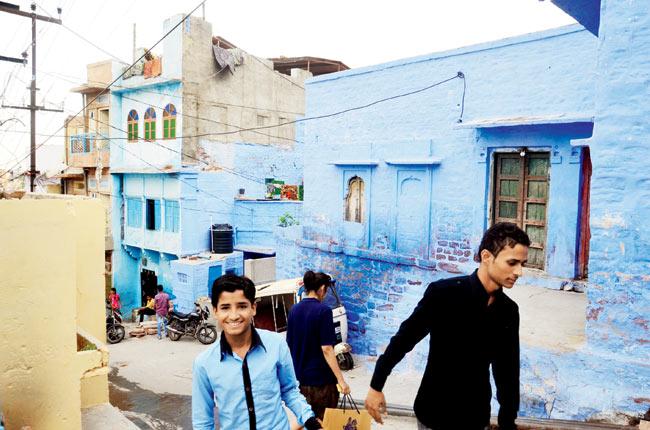
Jodhpur’s homes and temples are painted blue, but there’s not one blue face here
One of the travellers in the group asks the permission of a local before clicking his photograph. “Of course you can, Siddhartha Joshi,” comes the reply.
Joshi does a double take.
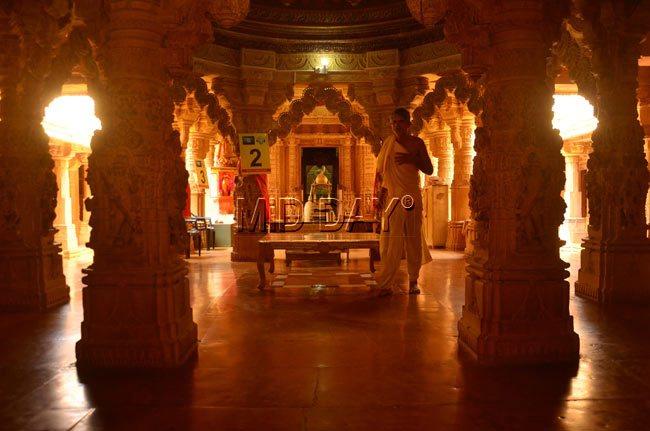
A Jain temple inside Jaisalmer Fort
It turns out that the local, Sumer Singh Rathore, is an avid follower of Joshi on social media and the two have often exchanged travel stories on the region online. Joshi gushes deeply as Rathore’s friends join us. Rathore is rather enjoying this. The rest of us, a most entertained audience, stand by, greatly amused at Joshi’s celebrity status in a hamlet he had never even heard of till now.
Desert song
Dinner in the dark of the sand dunes is a camel-ride away, which feels like being on a Ferris Wheel on dubious substance. What’s more — my camel, whom I carefully plan to share with a tall, well built co-traveller (lest I topple over), has an inexplicable affinity for Joshi’s camel. The beast I ride frequently nudges, nuzzles and runs into his companion through the safari, until I’m sure not whether I will get out of this ride unscathed. “They are friends,” says their caretaker casually, to stop me from breaking into curses from atop his animal.
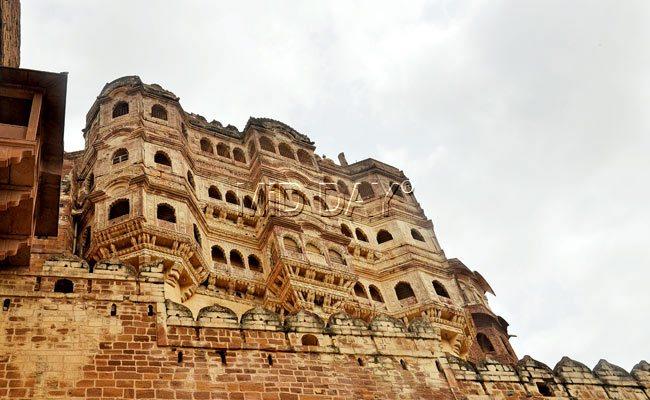
The stunning, yellow-stoned Jaisalmer Fort
Far in the Thar desert, beside massive fluttering shamianas, are four folk singers. As I get used to the timbre of their rustic voice, I realise they are singing a forgotten Sindhi folksong, ‘Lal Meri’, which reminds me that I am as close to home as I can be. My eyes turn to the youngest singer, barely 10, whose veins pop up in his neck as he sings the folksong like he speaks the language. He shyly tells me he rehearses for two hours daily, and will soon pick up the instrument an avuncular senior performer is playing beside him — the sarangi, as the latter emits notes of longing and valour deep into the night.
On the trail of the ‘chudail’
“If you stumble upon abandoned jewellery, do not pick it up. And if you see a flame flickering in the distance, cough loudly.”
Himmatji, our driver looks at us us pointedly. Some faces are terrified, others defiant, even dismissive. “A good many travellers have picked up glittering necklaces here and not lived to tell the tale.”
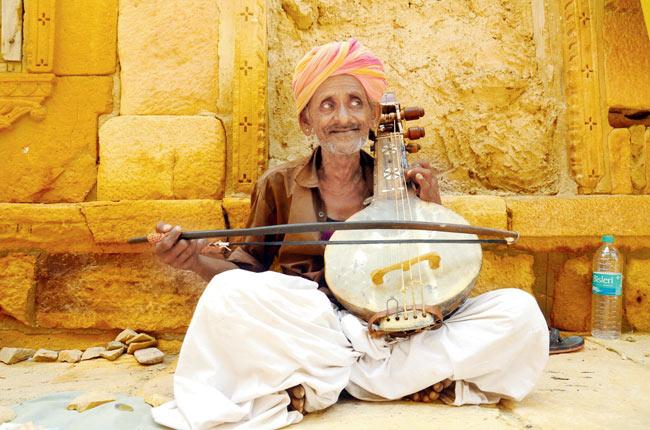
A street musician
Whether the haunted village of Kuldhara is really haunted, we don’t know, but Himmatji has a way with words (and sombre eyes). True enough, we stumble upon a wall shielding the village. “This has been erected by the government to keep travellers away from the chudails,” he says. On this trail, with the help of lanterns, we amble through the home of the chief whose daughter was the object of the ruler’s affections. Homes, temples, cannons, even granaries, are eerily intact in Kuldhara, as if waiting for their occupants to return. As we go in and out of rooms of what are believed to be haunted homes, Himmatji looks at my ankle, hopelessly sprained while I gallivanted around the folk musicians at dinner before. “Chudails always pick out the weakest in the group. I thought you should know that...” he trails away.
The morning after
The next day, even the Jaisalmer fort, with all its ochre glory, does not wipe away the feeling of having been through a time warp the previous night. It takes some getting used to — locals flitting in and out of Jaisalmer’s narrow alleys, and the old fort itself, the only one in the country to be inhabited by locals. “If you want your children to see the Jaisalmer fort, don’t live in its hotels. It is sinking by several feet every year and the water system is in shambles,” says our guide, called ‘Raju guide’, who promises he didn’t take up the name after the Dev Anand-starrer Guide.
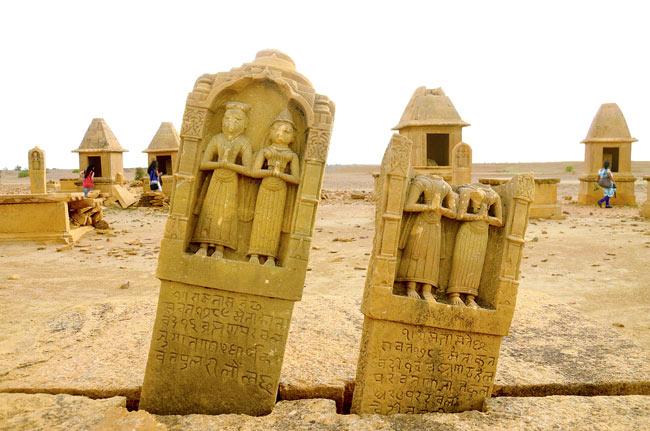
Cenotaphs of Arab, Oriental and European traders in Jaisalmer
It is here, in Jaisalmer’s buzzing town, that I realise how many different stories the city holds within. Abandoned villages, proud cenotaphs, priests with stories enough to last a lifetime share space and times with the unimaginably well-crafted Patwon ki Haveli, elderly goldsmiths toiling away in its lanes. Who can say, maybe it was this city that inspired Ibn Batuta to write about the golden sands and the caravans lost in time.
(In Jaisalmer, the writer was the guest of Suryagarh)
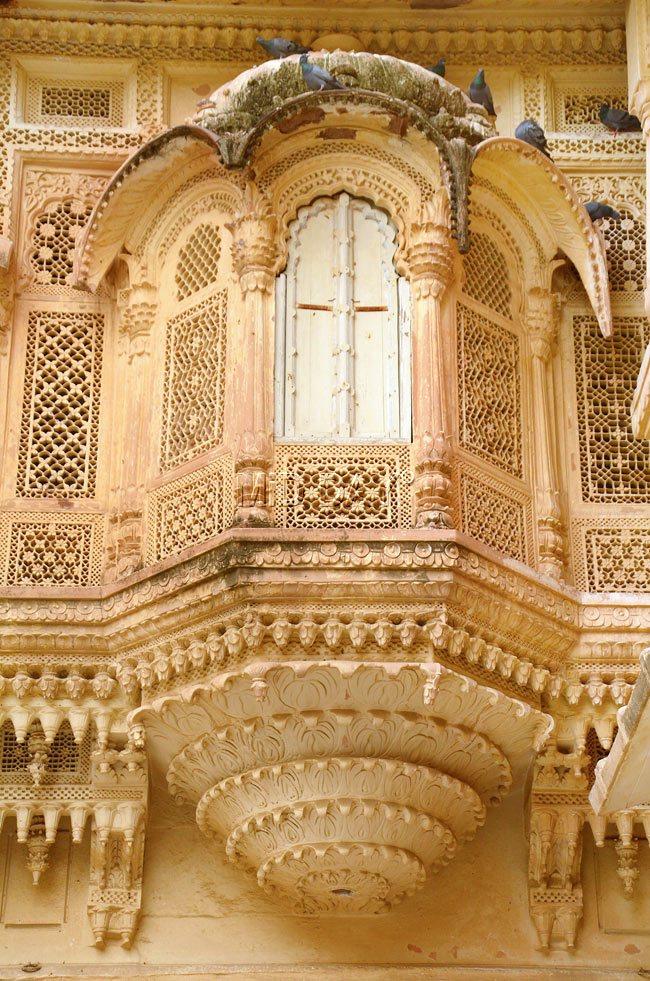
Mehrangarh Fort: No traveller has come to Jodhpur and not been transfixed by this fort’s beauty. The 500-year-old Mehrangarh towers above Jodhpur is impeccably maintained by the Mehrangarh trust. Visit this fort between 3-4 pm to catch a young boy aiming meat at eagles, and try out their audio tour — it has interesting interviews with conservationists and the state’s royal family.
Stop by at the two small mojri shops outside the fort and allow the man selling dupattas nearby to flatter you into buying his exquisite bandini and lehriya fabric collection.
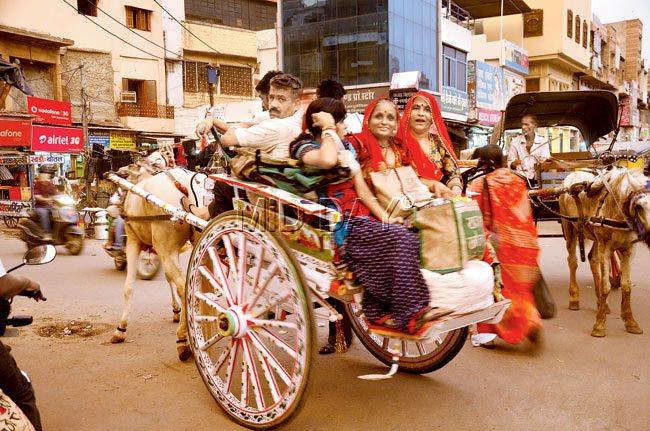
So long, lassi: After Mehrangarh, take the lane which goes towards Ghanta Ghar and you will pass Jodhpur at its bluest — blue homes, blue temples but not one blue face. Carriages driven by cattle and horses are common and streets technicolour.
Near Ghanta Ghar, the city’s watch tower is Mishrilal Hotel. Their thick lassi and rabdi are like none other, and legendary for a reason. The mirchi pakodas are fried once in the morning and served cold through the day, but still worth a bite.
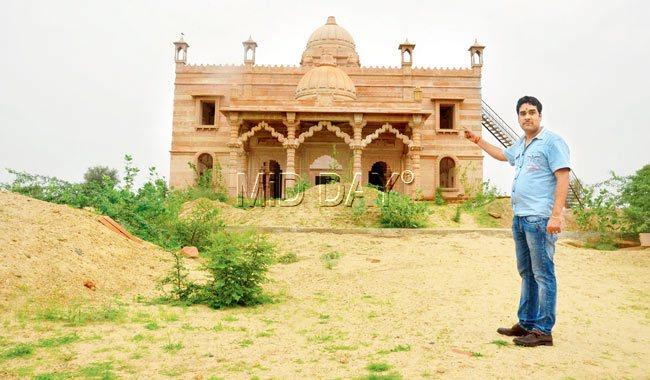
Meeting the Bishnois: It is Sunil Bishnoi (right) who takes me to Khejadli, a town 28 km away and most remembered for being the site of the Chipko Movement in 1730. It was here that 363 Bishnois sacrificed their lives to save the Khejri trees the community considers sacred. Today, the slender Khejri trees abound in Khejadli, and it is not uncommon to bump into Bishnoi men and women tending to their cattle peacefully.
By next year, the temple near the memorial built at the massacre’s site, will be complete. The temple complex is expansive, tree-lined and calls of the peacocks ring through the afternoon, never ceasing. On the walls of the temple is carved the story of the massacre and the life and tenants of the Bishnois, who believe that nature comes before man at all time.
The lavish and the laidback
At Jaisalmer, the hotel Suryagarh is lavish and organises unusual cultural experiences for its guests, including musical performances and meals in the middle of the Thar desert. Spread over five acres, the hotel has restaurants serving both international as well as authentic Rajasthani cuisines. Log on to www.suryagarh.com
In Jodhpur, try out Zostel, a new backpacker’s hostel chain found in six cities across India. It is clean, equipped with dorms for women, men and couples, and offers an impressive Wi-Fi connection and basic amenities. Meeting interesting co-travellers are a guarantee, too. (www.zostel.com)
Meanwhile in Jodhpur
Where Jaisalmer is just about dipping its toes in the monsoon this year, Jodhpur is having quite the rain party. This city is for everyone — the history buff, the art-and-crafts lover, the laidback traveller and the compulsive street photographer
 Subscribe today by clicking the link and stay updated with the latest news!" Click here!
Subscribe today by clicking the link and stay updated with the latest news!" Click here!






